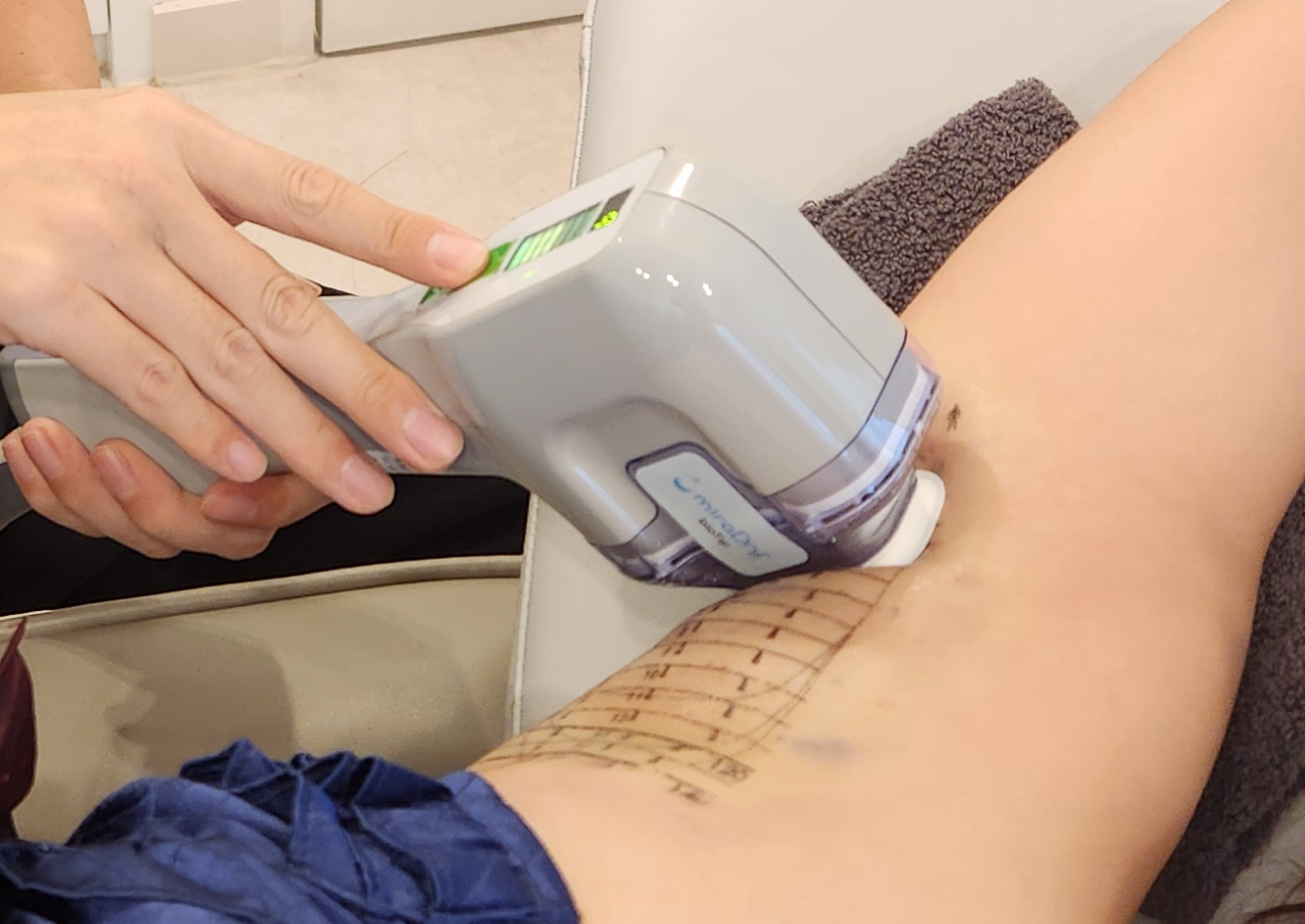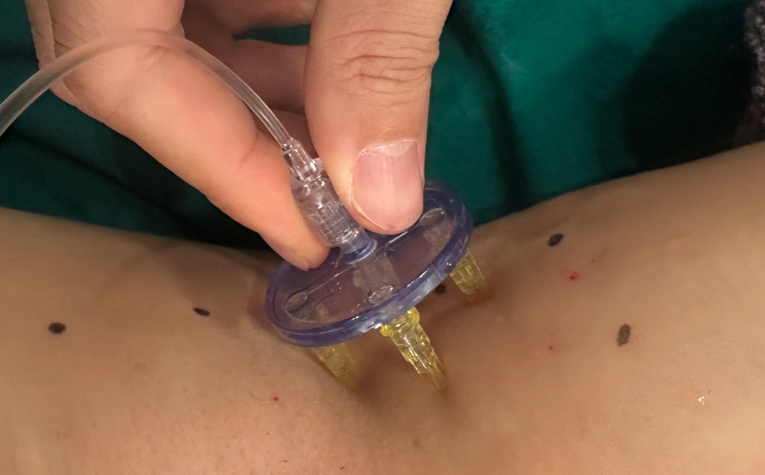Hip Dip Treatment: The Time is Now – A Collaboration of Immediacy and Sustainability
“No matter how much you exercise, hip dips just don’t go away.”
Hello, I’m Dr. Dodo, the director of EGDongAn Clinic, located in front of Apgujeong Station Exit 5 in Gangnam, Seoul. Lately, more and more people are concerned about “hip dips,” the indentations on the side of the buttocks below the waistline. A few days ago, a female patient in her 30s visited me, stressed every time she wore a tight dress because of her hip dips. She had tried squats for a beautiful body line and even considered fat grafting surgery. However, she hesitated due to concerns about downtime and side effects from surgery, and then she came across Dr. Dodo’s blog at EGDongAn Clinic and decided to visit. During our consultation, I suggested a combined procedure using hyaluronic acid (HA) filler and Poly-L-lactic acid (PLLA) filler. Immediately after the procedure, the patient looked in the mirror and was surprised to see the hollow areas filled in, exclaiming with a laugh, “If only I had known sooner, I wouldn’t have suffered so much with exercise!” I also felt a great sense of accomplishment as a practitioner when I observed the naturally filled-in side profile due to collagen regeneration several months later during follow-up.
In this post, I will share my clinical experience with hip dip correction procedures and explain in detail the principles and advantages of filler collaboration that achieve both immediate effects and lasting improvements.
Table of Contents
- What Are Hip Dips?
- Traditional Hip Dip Correction Methods and Their Limitations
- Hyaluronic Acid Filler vs. PLLA Filler – Synergy of Immediacy and Sustainability
- Procedure Process: How is it Performed?
- Post-Procedure Effects and Duration
- Side Effects and Safety?
- Post-Procedure Care and Tips
- Conclusion – Advice from a Sculptra Master Doctor
What Are Hip Dips?
‘Hip dips’ refer to the inward indentations where the outer thigh meets the pelvis, caused by the structure of the pelvis and thigh bone. In English, they are also called trochanteric depression or violin hips. While not everyone has them, an indented curve can form between the upper side of the waist and the thigh depending on body type and hip height. This hip dip area is anatomically located below the greater trochanter of the femur and is influenced by the pelvic bone structure and surrounding muscle and fat distribution. Hip dips themselves are a perfectly normal human anatomical structure, but some people perceive these indentations as a cosmetic issue. Indeed, hip dips can make the side silhouette appear less smooth and more uneven, leading to complaints of reduced confidence when wearing swimsuits or tight clothing.
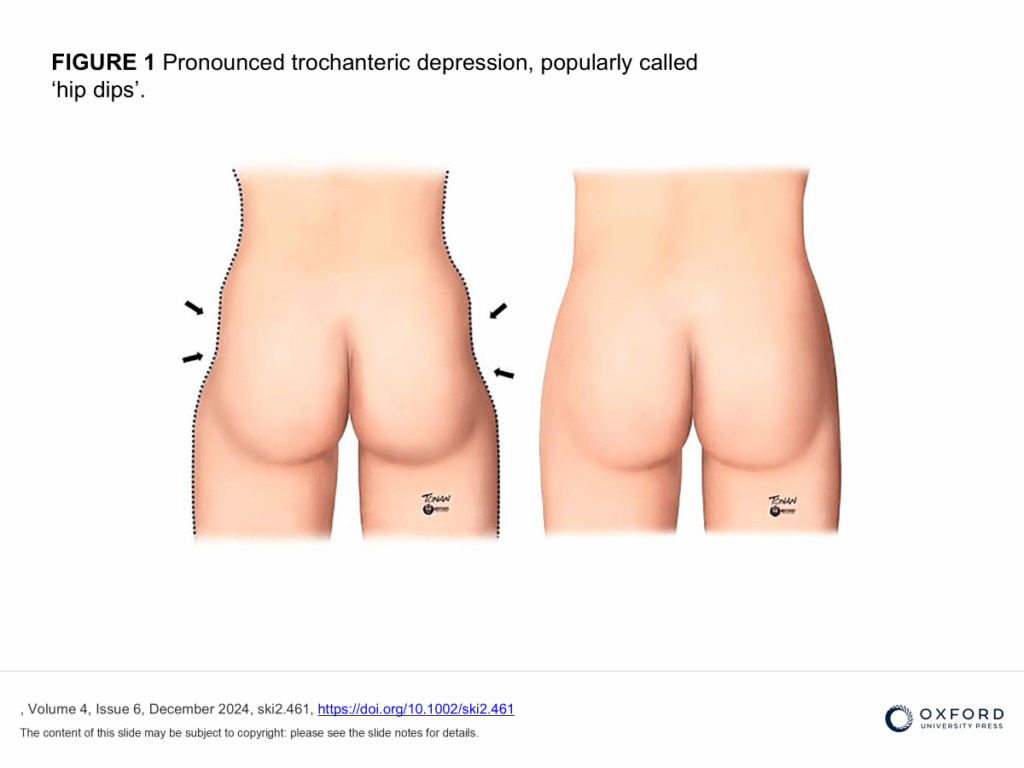
Of course, exercise can somewhat compensate for hip dips. Actively strengthening the gluteus medius and other muscles on the side of the buttocks can increase the volume of these muscles, slightly alleviating hip dips. However, since they are depressions formed by the bone structure of the pelvis, exercise alone has limitations, and for those with low body fat, it can even make hip dips more prominent as fat doesn’t accumulate easily there. Therefore, some individuals consider surgical methods.

Traditional Hip Dip Correction Methods and Their Limitations
Traditional methods for alleviating hip dips broadly include autologous fat grafting and artificial implant insertion (Hip Implant). Autologous fat grafting involves extracting fat from another part of the body, refining it, and injecting it into the hip dip area. The advantage is that it uses one’s own fat, so there is less foreign body reaction, and the results can be relatively natural. However, fat grafting involves surgery and requires general or local anesthesia, and there is a considerable recovery period with swelling, bruising, and pain after the operation. Furthermore, the absorption rate of transplanted fat cells varies greatly individually, so if the engraftment rate is low, desired volume may not be achieved, requiring multiple repeated procedures. Additionally, for slender individuals, it can be difficult to secure enough fat for grafting.
Implant insertion is a method of filling volume by inserting artificial implants, such as silicone, into the hip dip area. This can be thought of as similar to breast implant insertion and is sometimes attempted when there is insufficient fat or a desire for more prominent volume. However, implant surgery involves permanently inserting a foreign object into the body, which carries risks of complications like infection or capsular contracture. Also, the feel can be artificial, or the edges of the implant may be palpable, leading to complaints of discomfort in daily life with frequent buttock movement. Most importantly, it is difficult to choose due to surgical scars, recovery time, and cost.

For these reasons, non-surgical procedures that can easily fill hip dips without surgery have recently gained attention. The most representative of these is filler injection. Fillers have primarily been used to fill wrinkles or add volume to the face, but with the development of body contouring fillers, they are also being used to augment the buttocks and hip area. Initially, the focus was on hyaluronic acid (HA) fillers for immediate volume, but recently, there has been an increasing number of cases using PLLA fillers (product names like Sculptra) for buttock and hip dip correction. Furthermore, combination procedures that leverage the advantages of both HA fillers and PLLA fillers by using them together are emerging as an advanced trend. This is a highly attractive alternative for many patients as it can fill hip dips with a simple injection procedure without fat grafting or implant surgery.
Hyaluronic Acid Filler vs. PLLA Filler – Synergy of Immediacy and Sustainability
Hyaluronic acid (HA) filler and Poly-L-lactic acid (PLLA) filler correct hip dips in different ways. First, hyaluronic acid filler is a material that physically fills volume by injecting a viscous gel into the skin or subcutaneous fat layer. HA is a substance present in our skin and cartilage, known for its excellent moisturizing ability; upon injection, it fills the space directly and draws in surrounding water to create volume. As a result, the indented area immediately becomes plumped up right after the procedure. Also, using a body-specific HA filler with relatively hard particle sizes provides high shape retention, holding its form well even in weight-bearing areas. However, HA filler is a temporary filler that is slowly absorbed and disappears in the body over time. While it varies by individual and product, the effect usually lasts for 6 months to 12-18 months, after which the volume decreases, requiring regular additional treatments or touch-ups to maintain the desired appearance.
Meanwhile, PLLA filler, commonly known as Sculptra, is referred to as a bio-stimulator. This means that instead of directly filling space with a gel, it injects very fine PLLA particles into the tissue to induce our body to produce its own collagen. PLLA is initially injected with some volume, but within a few days, the solution is absorbed, and there may appear to be no significant change temporarily. However, after about 4-6 weeks, new collagen begins to fill in the injected area, and the volume gradually increases. While it requires time to see the full effect, the advantage is that once formed, the collagen matrix lasts for a relatively long time. The effect of Sculptra in the facial area is reported to last for over 2 years, and there are reports that volume improvements achieved in the buttocks or hip area can persist for several years. In fact, one clinic in the UK uses both HA filler and PLLA filler for hip dip correction to aim for both immediate volume improvement and long-term maintenance for up to 5 years.
| Comparison Item | PLLA Filler | HA Filler |
|---|---|---|
| Ingredients & Mechanism | Synthetic biodegradable polymer, stimulates collagen production | Natural polysaccharide, attracts water |
| Onset of Effect | Gradual, starting after 4-8 weeks | Immediate, right after injection |
| Duration | 2 years or more (up to 5 years reported) | 6–18 months |
| Advantages | Long-lasting, natural improvement | Immediate dramatic change, precise contouring |
| Disadvantages | Waiting time for effect, multiple initial sessions needed | Limited duration due to reabsorption, higher cost for large volumes |
As shown in the table above, HA filler and PLLA filler clearly have their own strengths and weaknesses. Hyaluronic acid filler provides immediate satisfaction by filling in sunken areas right away but has a shorter duration, while PLLA filler is excellent in terms of sustainability and naturalness, though it takes time. So, what if they are used together? This is precisely the collaboration of immediacy and sustainability. By combining the two types of fillers for hip dip correction, the HA filler provides immediate contour improvement right after the procedure, leading to higher patient satisfaction. Then, the collagen proliferation effect from PLLA gradually kicks in, helping to maintain the volume for a long time and even firming up the texture, creating a synergistic effect. Indeed, domestic and international specialists also state that “using HA filler and PLLA filler together as needed can achieve complementary effects.” In my own clinical practice, for areas like the hip dip that require both volume and elasticity, I observe even more satisfactory results by appropriately combining the two fillers compared to using either one alone.
Procedure Process: How is it Performed?
“Can filler really be injected into the buttocks?” For those hearing it for the first time, it might feel a bit unfamiliar. So, Dr. Dodo will explain the actual procedure process in an easy-to-understand way. First, precise consultation and design precede the procedure. After carefully checking the patient’s body type and the extent of hip dip indentation, the areas and depth for filler injection are designed. Since symmetrical balance of both indented areas is crucial, marking is done in a standing position, considering left-right balance with a laser pointer, etc.
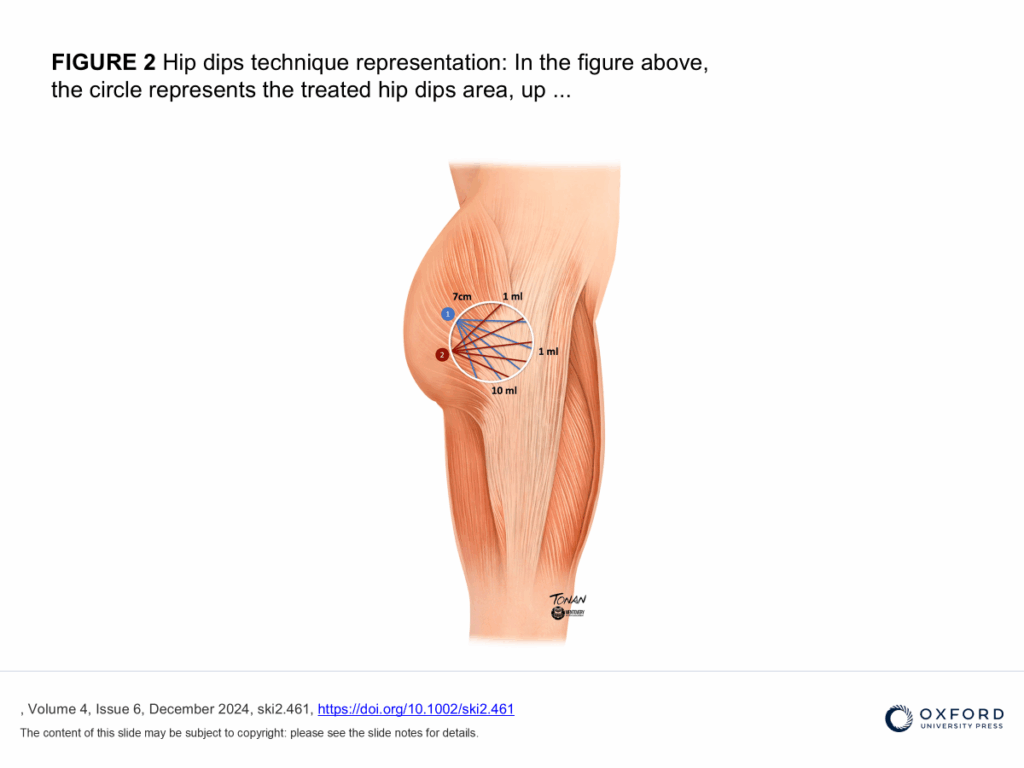
After applying local anesthetic cream or injection to the treatment area, the filler is injected under sterile conditions. Hyaluronic acid filler, being a viscous, gel-type substance with particles, is gently pushed into the subcutaneous fat layer using a blunt-tipped cannula (injection tube) or a thick needle. Typically, 50-100cc of HA filler per hip dip is injected in multiple layers to immediately fill the volume. Next, PLLA filler (Sculptra, Olidia, etc.) is prepared by mixing it with saline solution and lidocaine according to the product’s recommended dilution method. For Sculptra, one vial is diluted with 6-30cc, and sufficient time (several hours or more) is allowed after dilution for the particles to disperse evenly. The prepared PLLA suspension is injected into a deeper subcutaneous fat layer or above the muscle fascia. A cannula can be used, or in some cases, a thick needle of about 23-25 gauge is used for direct injection. I personally prefer using a cannula because it allows for even injection over a wide area with just one or two small incisions, and it reduces the risk of blood vessel damage. PLLA filler is injected in 1-8 vials per side, distributed across multiple layers to prevent potential clumping. After completing both sides of the procedure, the injected areas are thoroughly massaged by hand to ensure the filler spreads well. Especially for PLLA filler, the “5-5-5 rule” is recommended after the procedure: massage gently for 5 minutes, 5 times a day, for 5 days. This helps prevent particles from clumping together and forming nodules, and promotes even collagen regeneration.
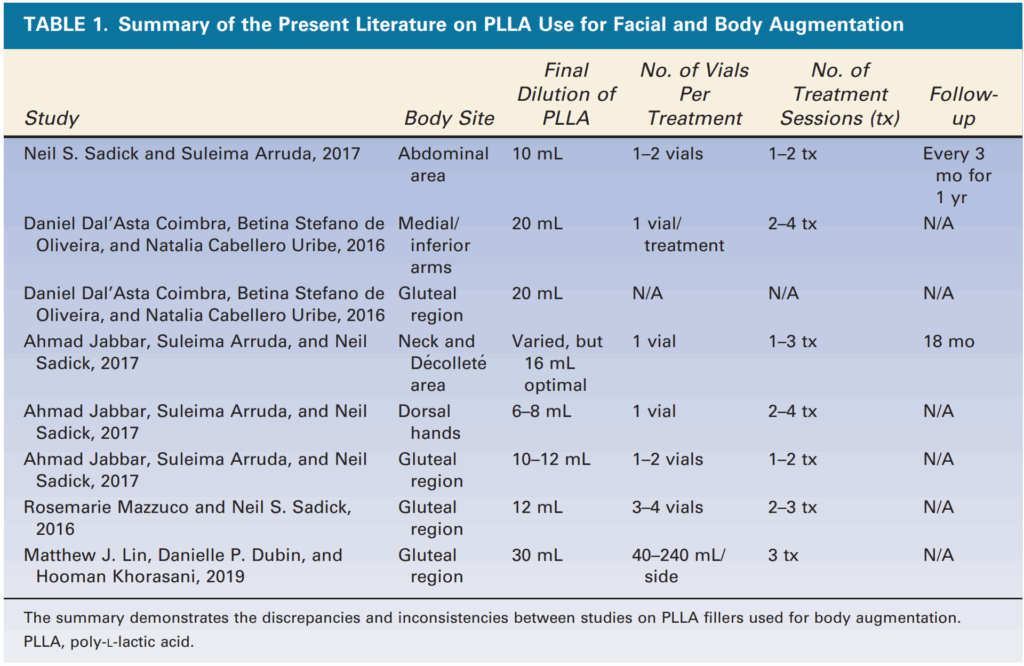
The procedure time, including design and anesthesia, takes about an hour. Bruising and swelling vary individually but generally subside within about two weeks. Immediately after the procedure, an immediate volume-filling effect visible in the mirror appears thanks to the HA filler, but as mentioned earlier, the effect of PLLA filler gradually appears after a few weeks. In some cases, sessions may be conducted 2-3 times at one-month intervals. For example, for individuals with very severe hip dip indentation, it is safer and more effective to induce collagen regeneration gradually over several sessions rather than injecting a very large amount of PLLA at once. At EGDongan Clinic, we create a customized treatment plan to match each patient’s schedule and goals.
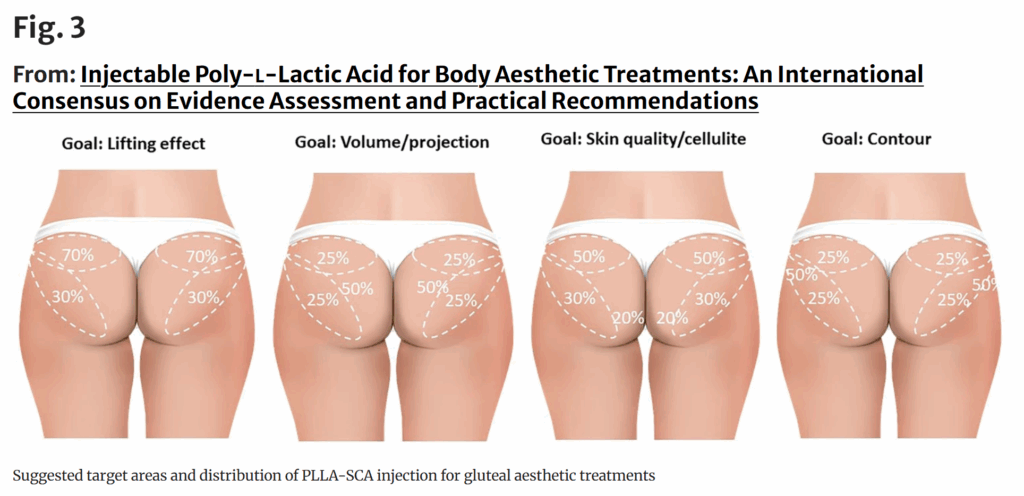
You can return to daily life immediately after the procedure, and there is no special downtime if you follow the precautions carefully. In the next section, we will continue with more detailed care tips and safety information.
Post-Procedure Effects and Duration
Results vary slightly from patient to patient, but generally, after hip dip filler treatment, individuals notice an immediate smoothing of their side profile silhouette. Specifically, as the areas that were previously indented above the panty line are filled, the curvaceous line connecting the waist, hips, and thighs is restored. Many patients are surprised when they look in the mirror immediately after the procedure, asking, “Line becomes this beautiful right away?” This immediate effect is primarily due to the HA filler injection. However, after HA filler injection, the volume may slightly increase for a few days as it attracts water to surrounding tissues, then decreases slightly from weeks 1-2 as it enters a stable phase. After that, it gradually degrades in the body, and its effect diminishes every 6 months to a year.
On the other hand, the effect of PLLA filler becomes more evident one month and two months after the procedure than immediately after. As the collagen fibers self-generated by the treated tissue gradually accumulate, the volume naturally fills, and the skin’s elasticity and thickness also improve. This helps maintain volume even when the HA filler effect gradually fades. Studies suggest that volume improvement due to PLLA filler-generated collagen lasts for at least 2 years or more. In my clinical experience, patients who received PLLA treatment in the buttock area often maintained good volume and a firm feeling for 1-2 years. However, the duration can vary depending on individual aging speed, lifestyle, and movement in the treated area. Since the hyaluronic acid filler portion typically disappears within about a year, it can be replenished as needed before then to bridge the gap until the collagen effect from PLLA becomes apparent.
One point to keep in mind is that the collagen regeneration effect of PLLA is not permanent. As our collagen also degrades and diminishes over time, re-treatment may be necessary after several years. However, subsequent treatments usually require much smaller amounts for maintenance than the initial treatment. For example, if the desired volume was achieved with 2-3 PLLA treatments in the first year, then maintenance can be effectively achieved with only a small amount of PLLA replenishment once every 1-2 years. Additionally, the HA filler portion can be refilled as needed. With this kind of maintenance management, you can maintain a smooth hip line without hip dips for more than 5 years in the long term.
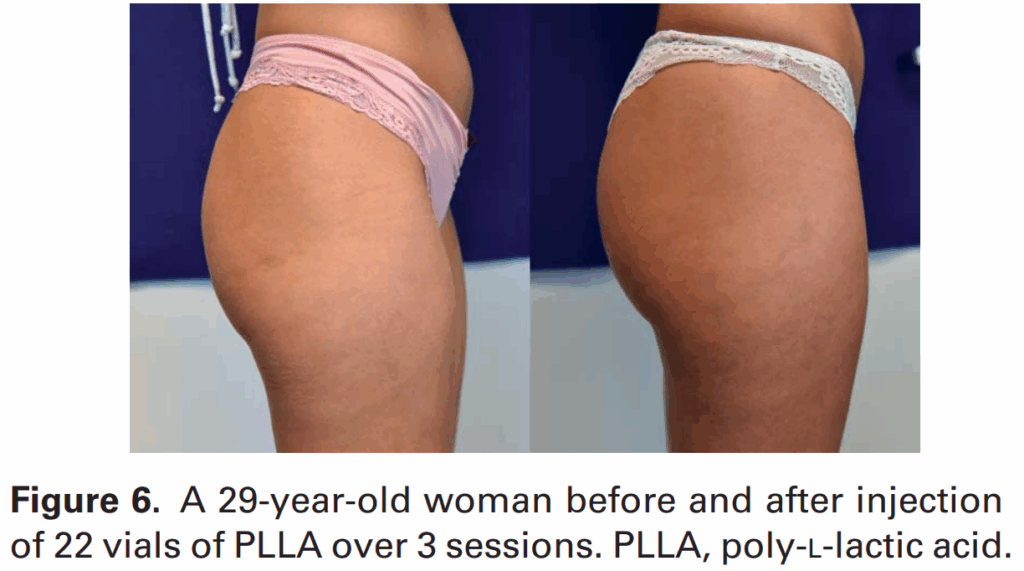
Side Effects and Safety?
Many people ask, “Is it really safe to inject filler into the buttocks?” To cut to the chase, hip dip filler treatment is relatively safe when performed by experienced medical professionals. Both hyaluronic acid fillers and PLLA fillers used are FDA-approved products for human use, and they are proven substances that have been used in aesthetic medicine for several years to decades. HA filler is structurally similar to hyaluronic acid, a substance naturally found in the human body, so allergic reactions are rare. PLLA is a biodegradable synthetic substance that is metabolized and disappears from the body after a certain period. PLLA (Sculptra) has already been approved by the US FDA for improving deep facial wrinkles, etc., and has been proven to have no significant issues with immune reactions or carcinogenicity in the body.
Common side effects that may occur during the procedure include bruising, swelling, and temporary pain. These are common reactions that can occur with any injection procedure and usually resolve naturally within a few days to 1-2 weeks. Slight sagging or minor asymmetry may initially appear along the injection path, but this also generally normalizes once swelling subsides and can be corrected in subsequent sessions if necessary. Rare complications that may occur include infection or allergic reactions, but these risks can be minimised by maintaining sterile equipment, the practitioner’s skill level, and the patient’s diligent post-procedure care. In particular, concerns about vascular damage or embolism are primarily an issue in facial filler procedures, but in the buttock area, large blood vessels are relatively less distributed subcutaneously, and the procedure is performed in a safe plane, so the risk is low. The practitioner injects into safe zones based on anatomical knowledge and further reduces risks by using methods such as cannulas.

We also frequently receive questions about nodule (lump) formation. In the past, when Sculptra first came out, there were reports of side effects such as hard, lump-like nodules after facial treatment. However, this was due to improper dilution or excessive injection in one spot. Currently, product dilution methods and injection techniques have greatly improved, significantly reducing such side effects. Indeed, a recent study that tracked 30 patients who received PLLA treatment in the buttocks reported that the main side effects were pain and bruising, all of which were mild. Furthermore, even when nodules did occur, most resolved naturally within a few weeks without special treatment. At EGDongAn Clinic, since we introduced PLLA for hip dip/hip augmentation procedures, patients have shown satisfactory progress without any specific side effect cases. Ultimately, I can confidently say that if a skilled doctor performs the procedure and the patient also diligently follows post-care instructions (massage, maintaining cleanliness, etc.), it is a safe and effective procedure.
Post-Procedure Care and Tips
After hip dip correction with filler, there is generally minimal discomfort and no significant disruption to daily life. However, to maximize results and minimize side effects, here are some care tips:
- Massage: As mentioned, after PLLA filler treatment, gently massage the treated area 5 times a day for 5 minutes for 5 days. There’s no need to press too hard; just rub it as if to evenly spread out any clumps. This helps prevent nodules and ensures uniform collagen regeneration.
- Avoid strenuous exercise: For at least 1 week after the procedure, it’s best to avoid intense lower body workouts, running, hiking, or any activities that could cause impact to the buttocks. The filler needs time to settle. Light walking is fine, but also avoid sitting for too long and maintain moderate activity.
- No saunas/steam rooms: Heat stimulation to the treated area can worsen swelling and increase the risk of inflammation. We recommend avoiding saunas, steam rooms, hot baths, or high-temperature yoga for at least 2 weeks.
- Maintain cleanliness: The needle marks at the injection site will heal in a day or two, but during that time, it’s important to keep them clean. Avoid showering on the day of the procedure, and from the next day, shower gently with lukewarm water, being careful not to rub the treated area. Also, avoid touching it with unwashed hands and always wear clean underwear.
- Alcohol and medications: Alcohol consumption and smoking can worsen inflammatory reactions and slow down recovery. We recommend abstaining from alcohol and smoking for at least a week. Also, blood-thinning medications like aspirin or ibuprofen can worsen bruising, so avoid taking them for a few days before and after the procedure (consult your doctor if necessary).
- Follow-up: It’s advisable to visit the clinic for follow-up checks at the scheduled times after the procedure. The doctor can confirm if more filler is needed, if the left-right balance is good, and take additional measures if necessary. At EGDongAn Clinic, we conduct systematic follow-ups at stages such as 4 weeks and 12 weeks after the procedure, and we provide consultations for any questions patients may have at that time.
By diligently following these care guidelines, you can maintain beautiful hip lines for a long time without worrying about side effects.
Conclusion – Advice from a Sculptra Master Doctor
Hip dips are just small indentations that cross the line of a confident apple hip, but the positive change they bring to the overall body silhouette when improved is surprisingly significant. What’s more, the ability to achieve both immediate volume improvement and long-term collagen regeneration with a simple injection procedure without surgery makes hip dip filler treatment a very attractive option for modern individuals. Of course, since the cause and degree of hip dips vary for each person, and the desired improvements are also diverse, a customized plan is crucial. Consulting thoroughly with your doctor to choose the most suitable method and materials is the shortcut to the best results. At EGDongAn Clinic (📍In front of Apgujeong Station Exit 5, Seoul egsns.com), where I practice, we always carefully analyze each patient’s body type and needs to provide the optimal hip dip correction solution.
It’s natural to have concerns as this is a sensitive area and a relatively new procedure, but if you find an experienced Sculptra key opinion leader, you can achieve safe and satisfying results. Hip dip treatment, the time is now! If you’ve been hesitating, consider a consultation with a Sculptra Master Doctor. As Dr. Dodo, I will personally listen to your concerns and find the most effective method for you. If you dream of a more confident and balanced silhouette with an apple hip line, don’t hesitate to visit EGDongAn Clinic. We’ll be your reliable assistant in finding your backside confidence. 😉
Appendix: References
- Lourenço L et al. “Hip dips technique: Filling lateral depressions with hyaluronic acid of large particles.” Skin Health and Disease. 2024;4(6):e461. DOI:10.1002/ski2.461
- Durairaj KK et al. “Poly-L-Lactic Acid for Gluteal Augmentation found to be Safe and Effective in Retrospective Clinical Review of 60 Patients.” Dermatologic Surgery. 2020 Oct;46(Suppl 1):S46-S53. DOI: 10.1097/DSS.0000000000002598
- Haddad A et al. “Injectable Poly-L-Lactic Acid for Body Aesthetic Treatments: An International Consensus on Evidence Assessment and Practical Recommendations.” Aesthetic Plastic Surgery. 2025;49:1507-1517. DOI:10.1007/s00266-024-04499-9
- Harper J et al. “Expert recommendations on the use of injectable poly-L-lactic acid for contour deficiencies of the buttocks.” Journal of Drugs in Dermatology. 2022;21(1):21-26. DOI: 10.36849/JDD.2022.6180


